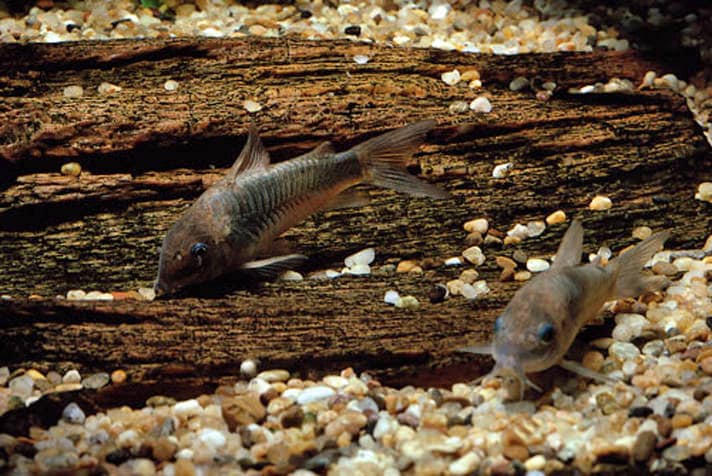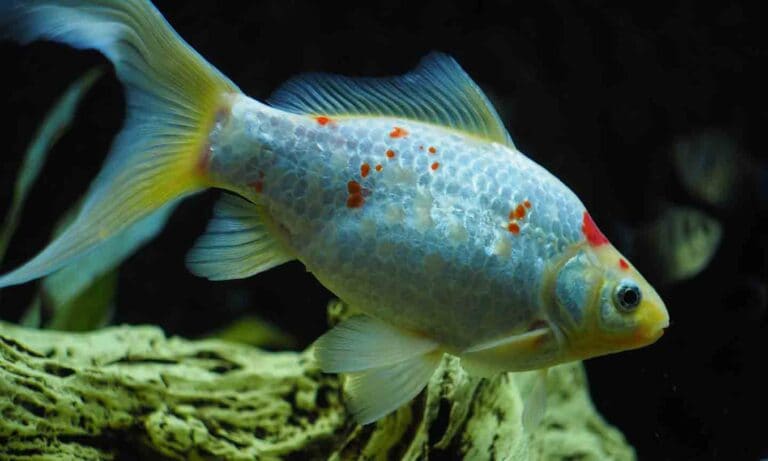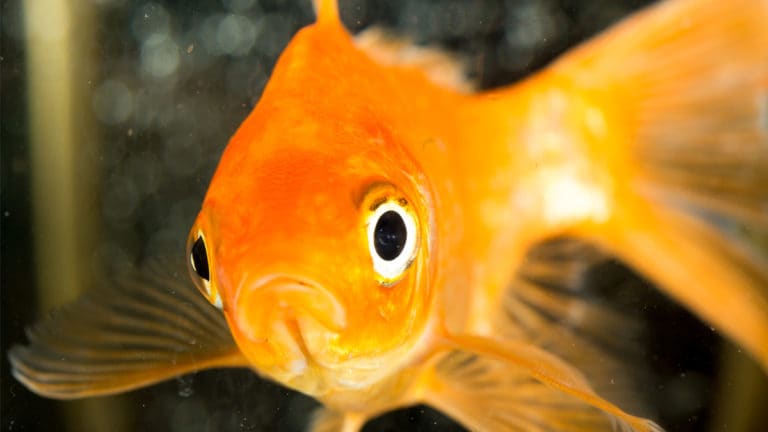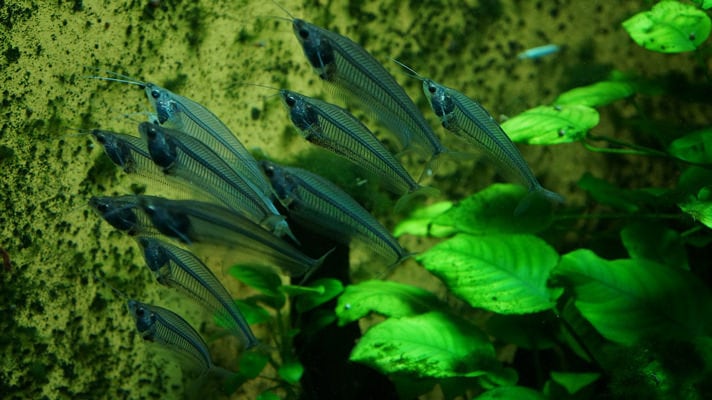Although primarily associated with Corydoras catfish, red blotch disease can affect a wide variety of benthic fish, including loaches and other types of catfish.
Identification
As its name suggests, red blotch disease is characterized by bloody sores on the skin, particularly along the belly. Sometimes the sores are relatively clean, but more often they’re associated with dead white skin and nasty looking blisters. Infections can take a while to spread, and affected fish may exhibit the symptoms of red blotch disease for weeks, even months before they finally die.
Opportunistic infections like finrot and fungus are very similar to red blotch disease, and to some degree they’re caused by similar things. It’s entirely possible that the bacteria responsible for red blotch disease are the same as those that cause finrot. The clearest distinction between the two diseases is in the types of fish that suffer from them; while finrot can affect any fish, red blotch disease is particularly characteristic of bottom-dwelling species that rest upon the substrate for extended periods, such as catfish, loaches and other bottom-feeders.
Pathology
While the bacteria responsible for red blotch disease aren’t known for sure, the causes are reasonably well understood. When wild-caught Corydoras catfish were imported to North America and Europe during the 1970s and 1980s, it was observed that many fish developed red blotches on their bellies and flanks immediately after arrival at the wholesaler or retailer.
Environmental stress was quickly established to be the key factor, but according to some catfish experts, another was the use of oxygen in shipping contains. Oxygen is often put into fish bags to ensure good health during transit, and being air-breathers, it was assumed that Corydoras would benefit from it too. But for whatever reason pure oxygen seems to irritate or otherwise stress Corydoras catfish, and even if otherwise shipped carefully, such catfish exposed to pure oxygen sometimes developed the symptoms of red blotch disease. According to these catfish experts, Corydoras are best shipped in large bags with plenty of air rather than smaller bags topped up with pure oxygen.
Ideally then, Corydoras should not be exposed to stress during shipping, and after purchase from the retailer, should be transported home as quickly as possible in large bags filled with enough water to keep them adequately covered and then topped up with air.
Substrate type
Fine gravel or smooth silica sand (such as pool filter sand) is the ideal substrate choices for the Corydoras aquarium. Coarse gravel inhibits their natural behaviors, but whether it actually damages Corydoras is a matter of debate. What is certain is that healthy Corydoras should have long whiskers, at least a quarter-inch long in the case of an average species such as Corydoras aeneus. Most tellingly, the whiskers should taper off to a point gently, almost like grains of rice. Corydoras kept in tanks with the wrong substrate will have much shorter whiskers. In the past this was often explained as the substrate wearing away the whiskers, but it is now understood that erosion of the whiskers happens because of bacterial infection, and a catfish without long whiskers is a catfish at risk of developing red blotch disease.
Sharp sand must be avoided. At the very least, abrasions to the whiskers and belly can make Corydoras more vulnerable to secondary infections including red blotch disease. Do bear in mind that some substrates designed specifically for planted aquaria are comparatively sharp and not recommended for tanks with Corydoras catfish; CaribSea for example recommend against the use of their popular Tahitian Moon Sand in tanks with Corydoras.
Anaerobic decay
There’s a commonly held belief that anaerobic decay in fish aquarium substrates increases the chances of disease among tropical fish, particularly bottom-dwellers like catfish. In fact the deep sand beds used as effectively biological filters in marine aquaria and increasingly freshwater aquaria as well demonstrate that in and of itself anaerobic decay isn’t dangerous to fish. Indeed, the nitrate removal performed by anaerobic bacteria is likely beneficial. But a deep sandy substrate with dysaerobic and anaerobic regions isn’t a filthy substrate, and it’s important that the top half inch or so of the substrate is kept clean. This is the region Corydoras plough through, and to some degree they help to keep clean by consuming small particles of food, algae, and other organic matter. Periodically cleaning this top level of the substrate will ensure healthy conditions, even if the lower levels are left alone to function as a deep sand bed.
Treatment
As with any other opportunistic infection caused by environmental factors, treatment has two elements: fixing the environment and medicating the fish. Environmental factors typically including poor water quality or extremes of water chemistry (i.e., water that is too acidic, too basic, or experiencing rapid pH changes at or between water changes). Do also note that most Corydoras catfish dislike excessively warm conditions, and apart from Corydoras sterbai, most of the commonly traded species are best kept between 72-77°F.
Broad-spectrum antibiotics such as tetracycline can be successfully used to treat red blotch disease, provided it is caught early. Some aquarists have found adding 1-2 teaspoons of tonic salt per gallon of water can be useful supplement to antibiotic treatment. It is crucial that infected catfish are maintained in a stable, healthy environment throughout their treatment otherwise such medications are unlikely to work.
Posted by: Chewy Editorial
Share:









